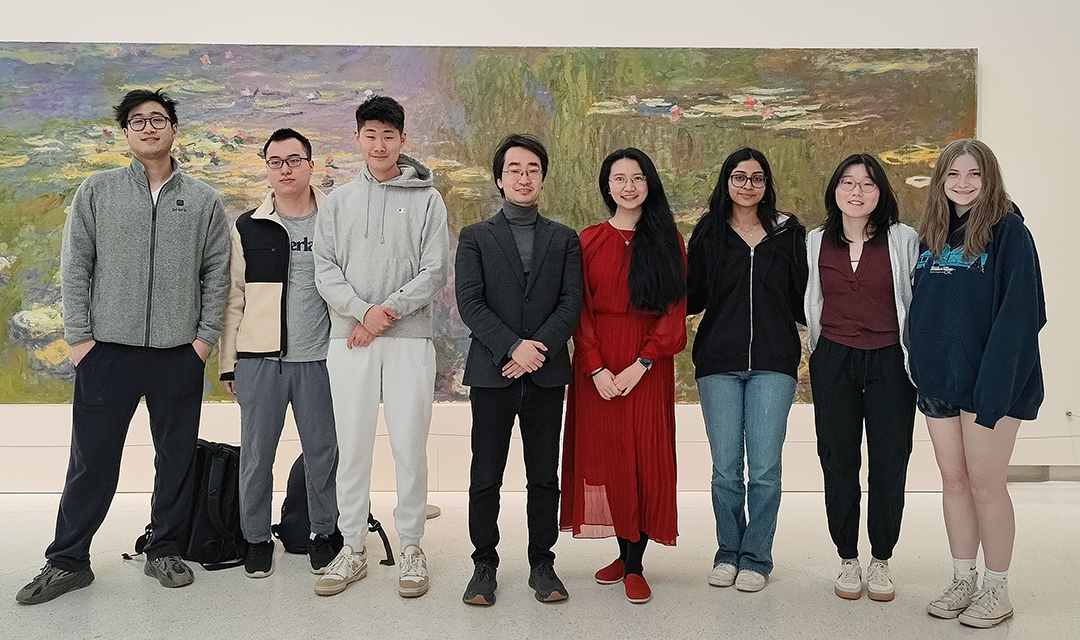New course harnesses AI to kindle creativity
New course, AI for Humanities, offers a unique perspective on how AI can revolutionize our perception and interaction with creative expressions.
Generative artificial intelligence models, like ChatGPT, have introduced AI to a new audience. With growing demand for user-friendly chatbots and virtual assistants, AI’s influence is rapidly expanding beyond the science and tech fields and into our broader society. To harness this technology for good, the next generation needs to understand and prepare for the impact of AI from a human perspective.
Ding Zhao has partnered with Gang Liu and Ting Su from the Dietrich College of Humanities and Social Studies to introduce a new undergraduate course, AI for Humanities, to students at Carnegie Mellon University.
AI is going to play a role in every industry, and we want students to know that it isn’t just a magic tool.
Ding Zhao, Associate Professor, Mechanical Engineering
“AI is going to play a role in every industry, and we want students to know that it isn’t just a magic tool,” said Zhao, an associate professor of mechanical engineering and director of the CMU Safe AI Lab. “AI has limitations, so we need to be careful not to misuse it in any capacity.”
The course, co-designed by Su, breaks the complex topic down into three modules: large language models and creative writing, generative models and artistic expression, and social and cultural voyages with AI. Students from the Tepper School of Business, Mellon College of Science, and College of Fine Arts participate in the class.
Through these modules, students learn how large language models can effectively aid in crafting creative content, kindle creativity, and discover how AI can allow individuals to virtually step into various cultural traditions and social viewpoints.
“We believe this is the first course of its kind across the country,” said Su. “It’s the first time we have a structured way to teach AI and the humanities together, so we wanted to make sure it highlighted impact across industries.”
Professionals, scholars, and artists in both the IT and entertainment industry visited the class throughout the semester to share real world examples of how working with and developing AI programs has affected their careers day-to-day.
Jamie Lee, a senior studying math, shared that the course has given her a new perspective on AI. “Most of my exposure to artificial intelligence was in classroom settings, so it’s interesting to learn about the societal impacts.”

For the course’s final project, students developed an AI generator that could create a custom souvenir for visitors of the Carnegie Museum of Art. After visiting the museum, students input photos of their favorite paintings and in turn receive an AI generated “painting” reflective of the styles they most liked.
“In media narratives, there’s often a captivating emphasis on aligning AI with human values and advocating for human-centricity. However, it’s essential to recognize the inherent diversity of human perspectives.” Zhao said. “In this course, one aim is for students with diverse backgrounds to learn from each other’s communities.”


